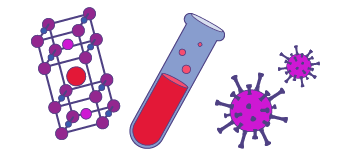The current limits in resolution are typically ~10-7 in pulsed magnetic fields, using the fiber Bragg grating method described below, and 10-8 in steady (DC) magnetic fields using capacitive dilatometers.
MS measurements in pulsed fields are carried out using a 125 µm Telecom single mode optical fiber, 9 µm core, furbished with a mm-long Bragg grating (FBG). The fiber is attached to the sample to detect length variations as the external magnetic field is applied. The reflection of light by the FBG at the Bragg wavelength shifts when the grating spacing changes. The change in wavelength is detected with a spectrometer furbished with a InGaAs line array camera operating at 47kHz (Jaime et al. Proc. Natl. Acad. Sci., 109, 12404 (2012)). Two different configurations can used to measure the MS. Longitudinal magnetostriction is measured with the fiber placed along the magnetic field direction, while transversal magnetostriction is measured when fiber is bent to sustain a 90 degree angle with the magnetic field.

Explore our magnet schedule to see what exciting research is happening on our stellar fleet of instruments right now.
J.W. Kim, et al, Multiferroicity with coexisting isotropic and anisotropic spins in Ca3Co2-xMnxO6, Phys. Rev. B. 89 (2014) Read online.
M. Jaime, et al, Magnetostriction and magnetic texture to 100.75 Tesla in frustrated SrCu2(BO3)2, Proc. Natl. Acad. Sci. 109 (2012) Read online.
M.M. Altarawneh, et al, Cascade of Magnetic Field Induced Spin Transitions in LaCoO3, Phys. Rev. Lett. 109 (2012) Read online.
Y. Kohama, et al, Anisotropic Cascade of Field-Induced Phase Transitions in the Frustrated Spin-Ladder System BiCu2PO6, Phys. Rev. Lett. 109 (2012) Read online.
Last modified on 01 August 2023